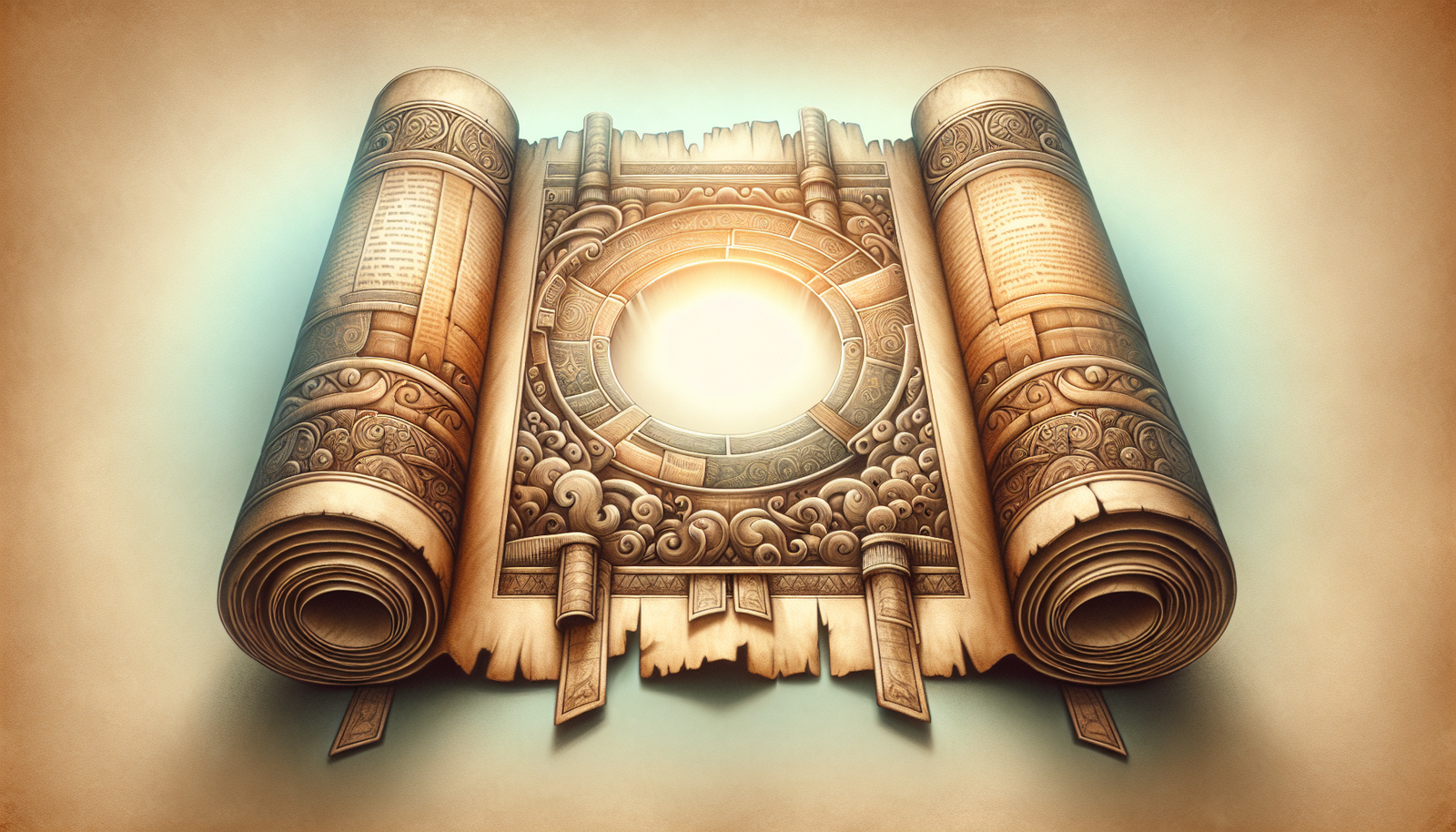Have you ever wondered about the exact moment when the biblical canon was officially closed? Understanding this concept can be pivotal in connecting the past with the theological and spiritual aspects of our current times and future studies.
By [Your Name], PhD in Theology
In today’s modern world, the question of when the biblical canon was closed remains a conversation point for theologians, historians, and curious minds alike. There’s a sense of urgency in 2025 to fully grasp this timeline due to the continuous evolution of digital theology, where texts and interpretations are increasingly merged with technology, thereby affecting religious understanding globally. My background in theology, coupled with visits to numerous manuscript vaults across Europe and Asia, has provided unique insights into the progression and closing of the biblical canon. This understanding not only enriches current theological studies but also offers clarity on the continuity of contemporary belief systems.
TL;DR
- Definition of Canon: The biblical canon comprises the books that are deemed divinely inspired and authoritative. These official texts were determined by religious leaders over centuries.
- Historical Events: Key councils and figures played crucial roles in determining inclusion and exclusion of texts.
- Significance: The canonization process directly impacts theological interpretations and practices today.
- Determining Closure: There is scholarly debate about the exact point of closure, but most agree on key events like the Council of Carthage (397 AD) as significant milestones.
- Modern Relevance: Understanding the closure of the canon helps in recognizing the influence and limitations of current biblical interpretations.

Understanding the Concept of Biblical Canon
What is the Canon?
The term “canon” refers to a collection of texts considered authoritative and divinely inspired by religious communities. Over the course of centuries, these texts have been analyzed, debated, and finally agreed upon as the foundation of spiritual and religious belief systems.
- Derived from the Greek “kanon”, meaning a measuring rod.
- Purpose: To establish a standard for doctrine, teaching, and practice.
Why Was the Canon Necessary?
Having an official set of scriptures acted as a guiding framework for early Christian communities. It provided structure to teachings and unified diverse beliefs across geographical locations.
- Unity: Offered a consistent baseline for teachings.
- Authority: Gave leaders a foundation for guidance and decision-making.
- Identity: Helped to define the community’s beliefs distinctively.
Historical Context: Major Milestones
The Early Lists
Before any councils or formal decisions, various lists were circulated among early Christian and Jewish communities. These lists varied depending on geographic and theological inclinations.
- Muratorian Fragment (ca. 170 AD): An early list that bears the marks of early canon formation.
- Athanasius’ Festal Letter (367 AD): Listed the 27 books of the New Testament for the first time as we recognize them today.
Key Councils and Declarations
Various councils played instrumental roles in canon formation and closure, setting precedents for which texts ought to be considered sacred.
- Council of Nicaea (325 AD): Though not solely focused on canonization, helped in unifying early Christian doctrine.
- Council of Hippo (393 AD) and Council of Carthage (397 AD): Both councils recognized the same New Testament canon we are familiar with today.
| Councils | Date | Key Decisions |
|---|---|---|
| Council of Nicaea | 325 AD | Unified Christian doctrine, indirectly affecting canon |
| Council of Hippo | 393 AD | Confirmed New Testament texts |
| Council of Carthage | 397 AD | Ratified previous decisions, solidifying canon |
Role of Jerome and the Vulgate
The Latin Vulgate, translated by Jerome in the late 4th century, became a standard text for centuries. His translations factored significantly into the decision-making process of which texts remained authoritative.
- Translation: Unified various texts into a single Latin version.
- Influence: Many subsequent canon-forming decisions were based on Jerome’s work.

Determining When the Canon Was Closed
Final Decisions and Recognitions
The closure of the biblical canon wasn’t a singular event but a gradual process influenced by numerous factors, including cultural, theological, and ecclesiastical developments.
- Proclamation of the Canon: There was no single, universally recognized declaration that marked an official closure.
- Regional Variations: Different regions accepted the closing at different times, though the 4th and 5th centuries are often noted as pivotal eras.
The Role of Reformation
The Protestant Reformation brought forth significant debates surrounding certain books of the canon, once again challenging the boundaries of what was considered official scripture.
- Martin Luther’s Critiques: Questioned the inclusion of certain texts, advocating for a canon more aligned with early church teachings.
- Counter-Reformation: The Council of Trent (1545-1563) reaffirmed the traditional canon, solidifying differences between Catholic and Protestant versions.
Modern Relevance and Implications
Theology in the Digital Age
In today’s digitized world, the notion of a closed canon can often intersect with evolving interpretations and modern theological studies.
- Digital Access: Easier access to various texts can sometimes blur the lines of what is considered canonical in public perception.
- Technological Interpretations: AI tools now assist in biblical analysis, affecting comprehension and theological conclusions, and reshaping how people engage with sacred texts today.
Interdenominational Impacts
Different Christian denominations hold varied definitions of canonical texts, impacting theological teachings and practical applications.
- Catholic vs. Protestant Canons: Discrepancies between the two over the Apocrypha illustrate ongoing differences in scriptural acceptance.
- Eastern Orthodox Considerations: Offers slight variations in canon that reflect unique theological priorities.
Conclusion
In conclusion, the question of when the biblical canon was officially closed remains complex, steeped in historical, theological, and sociopolitical contexts. Despite its complexity, the inquiry is significant for understanding foundational religious beliefs and how they inform contemporary interpretations and practices.
FAQ Section
What are the key councils that influenced the biblical canon?
The most influential were the Councils of Hippo (393 AD) and Carthage (397 AD), which ratified canon decisions, basing them on Jerome’s translations.
Did the canon differ among early Christians?
Yes, variations existed due to differing theological, geographical, and cultural influences until standard acceptance was achieved in the 4th and 5th centuries.
Why is the concept of a “closed canon” important today?
Understanding the closure helps identify which texts form the theological and moral basis of diverse Christian beliefs practiced to this day.
How do digital advancements impact our understanding of the canon?
Digitalization provides open access to classical texts and scholarly critique, thereby expanding people’s interactions with scriptural interpretations.
How does the closure of the canon affect interdenominational dialogue?
Differences between canons, such as those of Protestant and Catholic churches, impact theological discussions and ecumenical relations today.
People Also Ask Section
Could the biblical canon ever be reopened?
While unlikely, theoretical theological shifts or discoveries of new texts could spur debate on canonical inclusion.
Why does canon closure matter?
Canonical closure solidifies the theological bases for religious practices and educational teachings across faith communities.
Are all versions of the Bible canonized?
While numerous Bible translations exist, only those maintaining historical and theological standards are considered canonical.
How did early church politics influence the canon?
Church leaders prioritized certain texts based on doctrinal coherence and alignment with existing theology.
Do modern theologians ever question the canon?
Some theologians question historical biases or consider newly discovered texts, fostering ongoing dialogue.




